The Lumix GH5 is the latest in the line of Panasonic's top-of-the-range GH series of mirrorless cameras, which over the years have carved out a niche for themselves among videographers thanks to their breadth of movie-making features.
The current GH4 was launched back at the start of 2014, and has been starting to look a little dated when lined up against some strong competition.
Panasonic is hoping its latest model will not only re-establish the brand as the number choice for the professional videographer, but will also appeal to a wider market of enthusiast photographers looking for a highly capable camera that can shoot great stills and movie footage. Let's take a closer look…
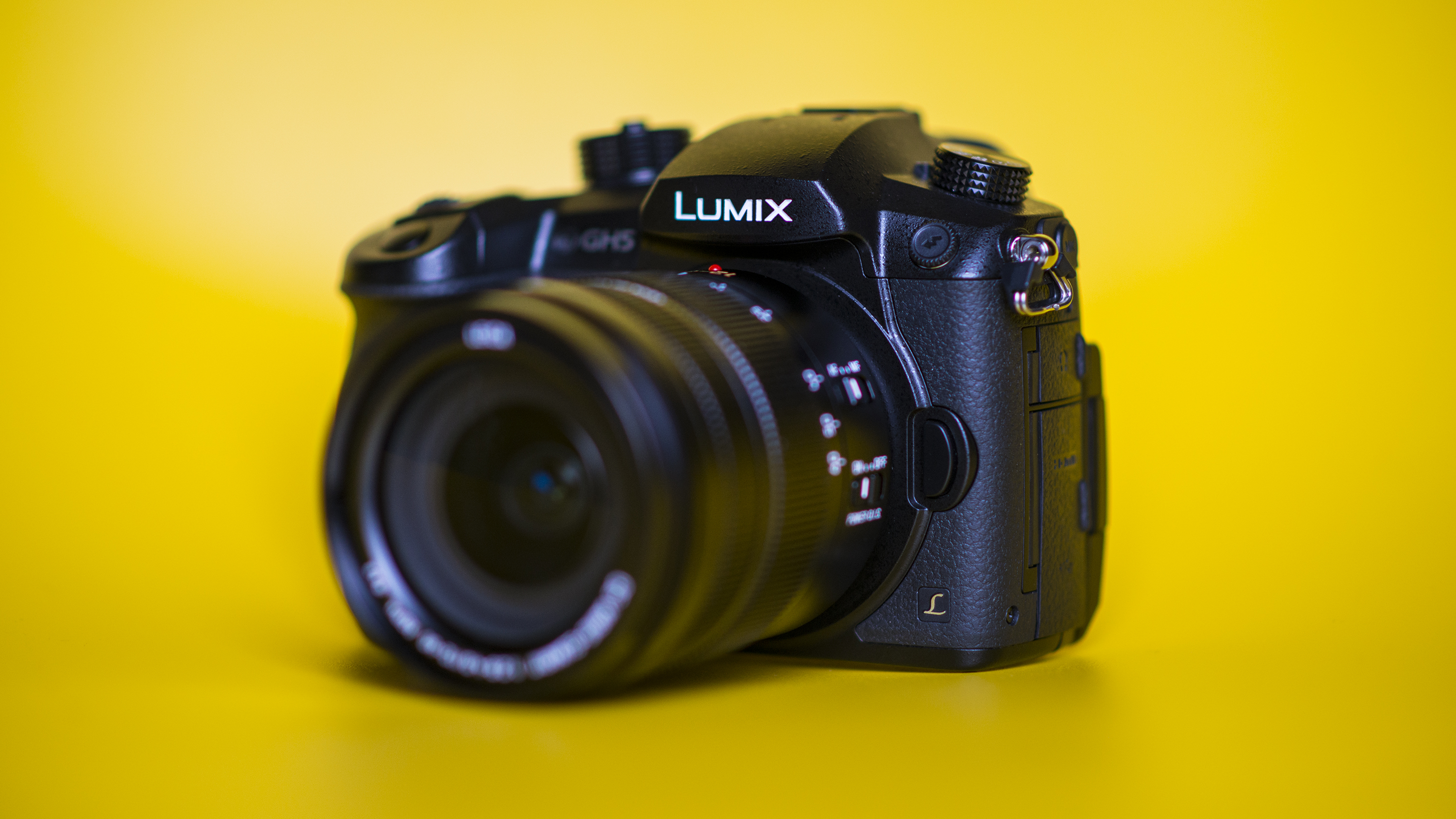
Features
- Micro Four Thirds Live MOS sensor, 20.3MP
- 3.2-inch vari-angle touchscreen, 1,620,000 dots
- 6K Photo still image extraction
As we've seen on some other recent Micro Four Third cameras, the Panasonic Lumix GH5 features a 20.3MP sensor that forgoes a low pass filter, which should see even more detail squeezed out from the chip.
While the resolution matches that of the Lumix GX8, Panasonic says it’s a different sensor and claims it'll yield the best image quality yet from a Lumix camera.
There's also a new Venus Engine, with 1.66x faster processing power thanks to an additional processing core, with Panasonic promising more natural, true-to-life images with better noise control. This should enable the GH5 to effectively correct for artefacts such as unnatural white edges, as well as reducing fringing and over-sharpening.
The GH5’s sensitivity range improves on the GH4’s by a stop at the bottom end of the range, running from ISO100-25,600 compared to 200-25,600 on the GH4. The increase in base sensitivity is welcome, especially if you want to take advantage of some of those fast Micro Four Thirds prime lenses in bright conditions, where an extra stop can be a help.
However, it would have been nice to have seen this extended even further, especially at the higher end of the range, where the GH5 loses out to rivals like the Nikon D500 and Sony Alpha A7S II.
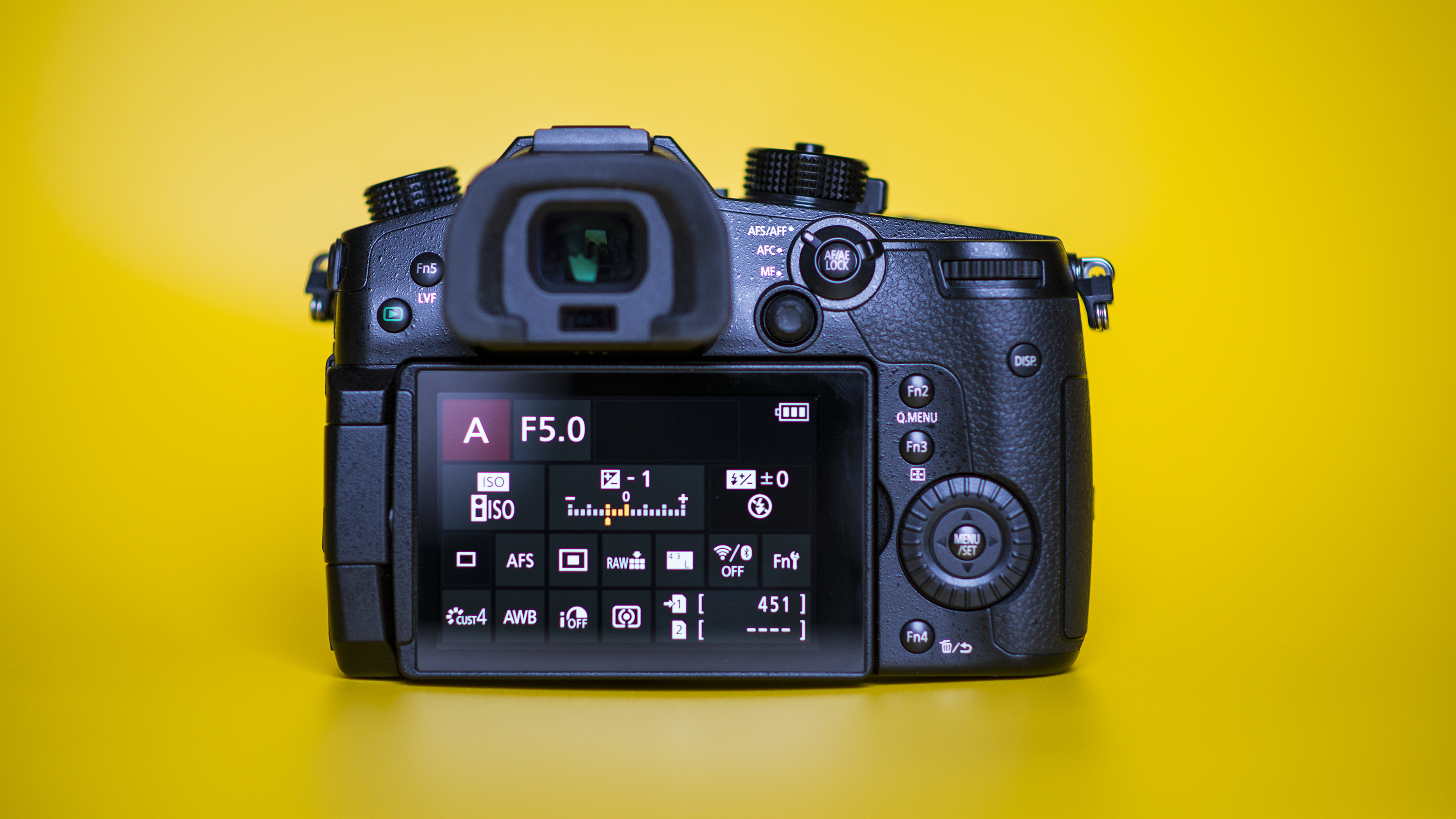
The Lumix GH5's electronic viewfinder sees a big jump in quality from the GH4's, up to a staggering 3,680,000-dot resolution and 0.76x magnification, while the vari-angle display has also been improved, with the 3.2-inch touchscreen featuring a resolution of 1,620,000 dots. The display also employs Panasonic’s WhiteMagic technology for increased brightness.
The GH5 gets Panasonic’s Axis Dual IS II anti-shake system. This in-body image stabilisation system works in tandem with Panasonic’s wide range of optically stabilised lenses to deliver up to five stops of correction – great news whether you’re planning to shoot stills or looking for a stable video rig, if you’re planning to shoot handheld quite a bit.
Before we get into the nitty gritty of the Panasonic GH5’s video capabilities, it’s worth noting that its specs offer some advantages for stills photographers too.
Much has been made of the ability to extract 8MP still images from 4K footage in the past, but the GH5 takes this idea even further, with the GH5 featuring what Panasonic is calling '6K Photo'.
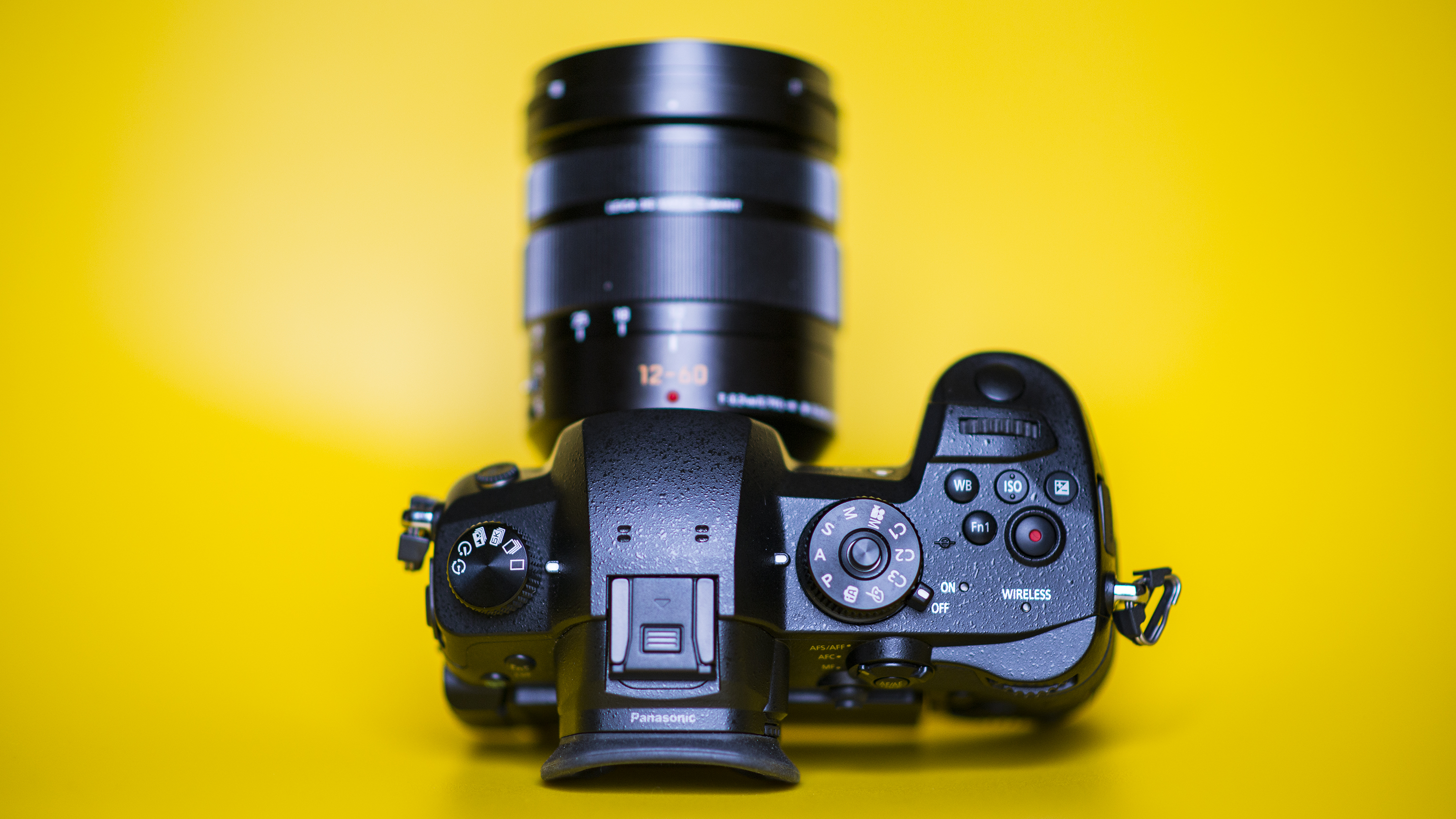
This means it will be possible to extract 18MP still images (at either 4:3 or 3:2 ratios) from ultra-high-quality video footage at 30fps at an unlimited burst rate. Very impressive stuff.
The GH5 will also allow '4K Photo' extraction, but this will now be possible from footage captured at 60fps – staggering when you consider that a $ 6,000/£5,000 Canon EOS-1D X Mark II has a maximum burst rate of 14fps (admittedly this is from a 20.2MP full-frame sensor).
Those who want to shoot more traditionally, and take advantage of the full arsenal of pixels the GH5 has to offer, can shoot at up to 12fps with focus locked at the first shot, or 9fps with continuous AF – that's with a 100-shot raw buffer too.
Finally, there's built-in Wi-Fi and NFC, as well as a low-energy Bluetooth connection that establishes a permanent connection between the camera and your smart device for easy transfer of images.
Video
- Cinema 4K (4096 x 2160) at 60p
- 4.2.2 10-bit output and internal recording
- Further firmware updates coming
While Panasonic is marketing the Lumix GH5 at both pro videographers and enthusiast photographers, most units are probably going to fall into the hands of the former, and as such it's no surprise to see the GH5 sporting an impressive movie spec.
This means that rather than using a cropped area of the sensor when shooting 4K as was the case with the GH4, the GH5 uses the entire width of the chip and then downsamples the footage in-camera. This also means that framing won’t be cropped, and you’ll be able to use your lenses as if you’re shooting stills.
Currently the Lumix GH5 allows you to shoot Cinema 4K (4096 x 2160) at 60p with a bit rate of 150Mbps, while Full HD video is obviously also possible, up to a very impressive 180p.
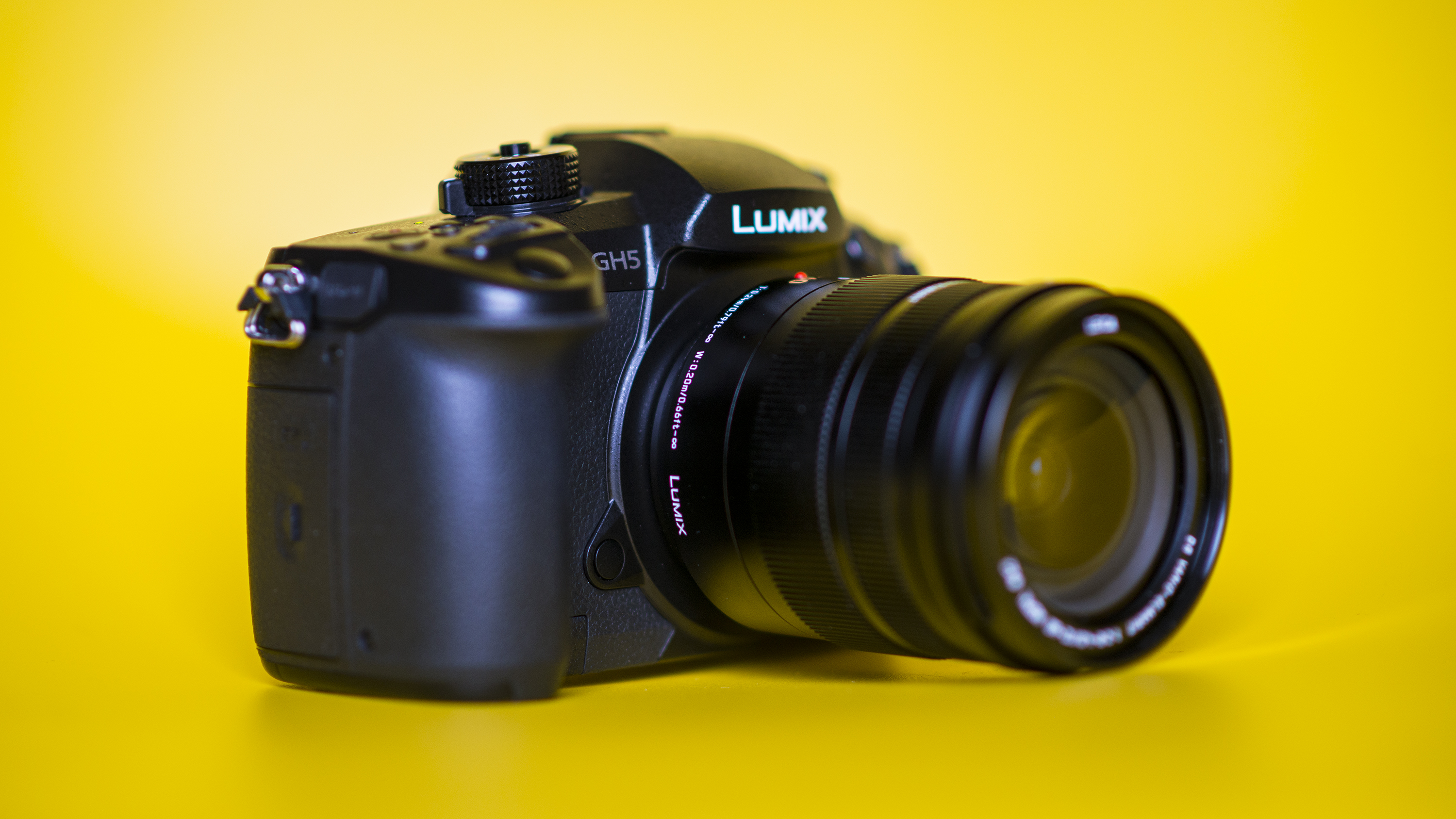
That's not all, as the GH5 offers color subsampling at 4:2:2 and a color depth of 10-bit, delivering greater color information and richer graduations. The GH5 also offers live output to external recorders such as Apple ProRes via HDMI, as well as simultaneous internal recording.
Finally, there's an XLR Microphone adapter for professional video production, which attaches via the hotshoe and offers two XLR jacks with physical switches and dials.
That's certainly a comprehensive video spec, but Panasonic is also planning to introduce a number of firmware updates over the coming months to bolster the GH5's recording capabilities even further.
This will include 400Mbps 4:2:2 10-bit All-Intra video recording in 4K 30p/25p/24p, Hybrid Log Gamma in Photo Style mode, which enables 4K HDR video recording, and USB tethering.
Build and handling
- Magnesium alloy body
- 13% bigger than the GH4
- Freeze-proof to -10 Celsius
While part of the initial ethos of mirrorless cameras was that they be smaller than their DSLR counterparts – and that's been particularly true for Micro Four Thirds models in the past – the Panasonic Lumix GH5 is actually some 13% larger than the GH4.
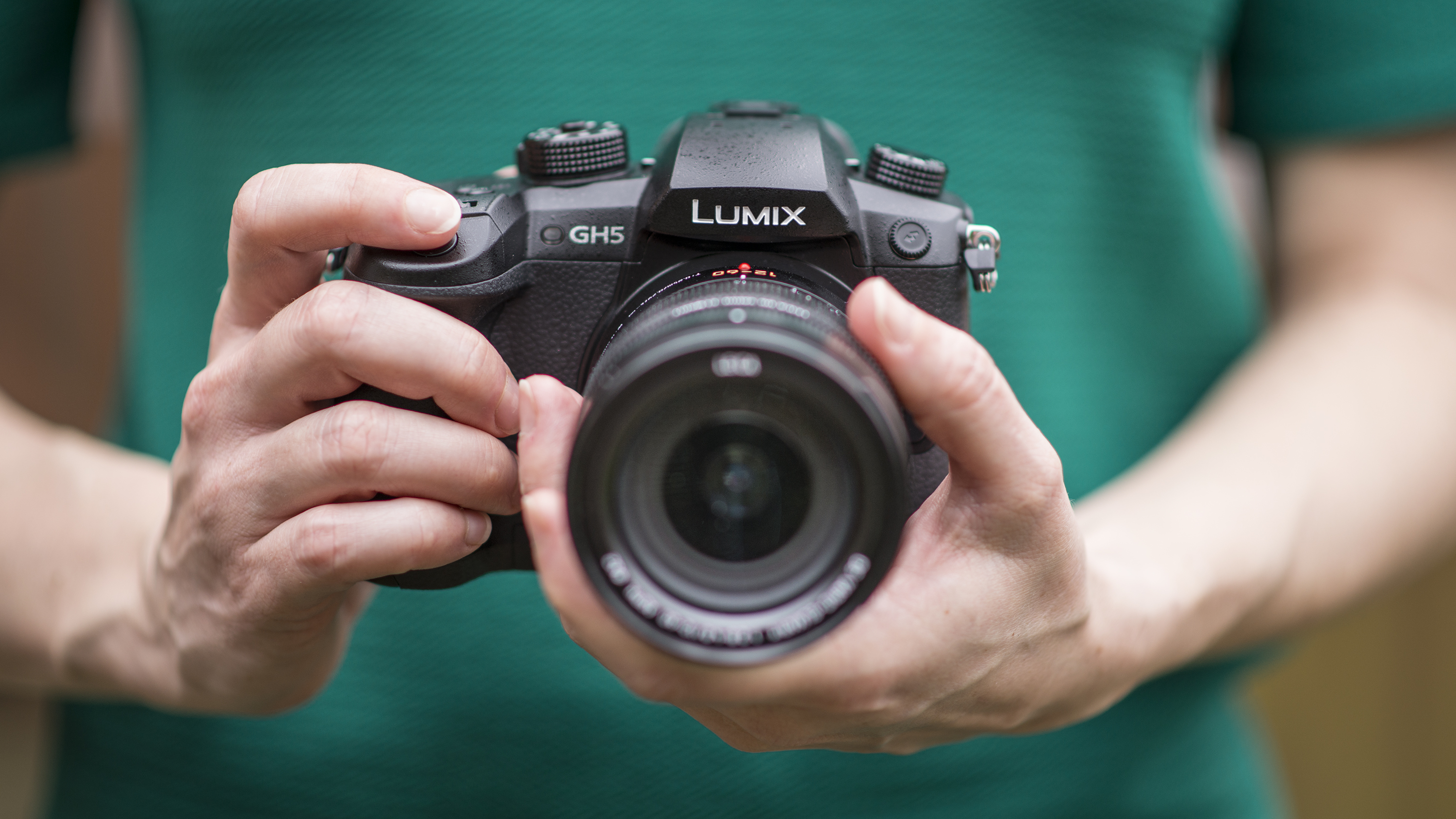
This may seem a somewhat retrograde step, but we think the Lumix GH5 is all the better for it. Panasonic has done away with the built-in flash we saw on the GH4 (something Nikon's recently done with the D500 as well), and this design tweak, combined with the magnesium alloy chassis and large, purposeful handgrip, means the GH5 feels every inch the high-end professional piece of kit it's meant to be. It really is a nice camera to pick up and shoot with.
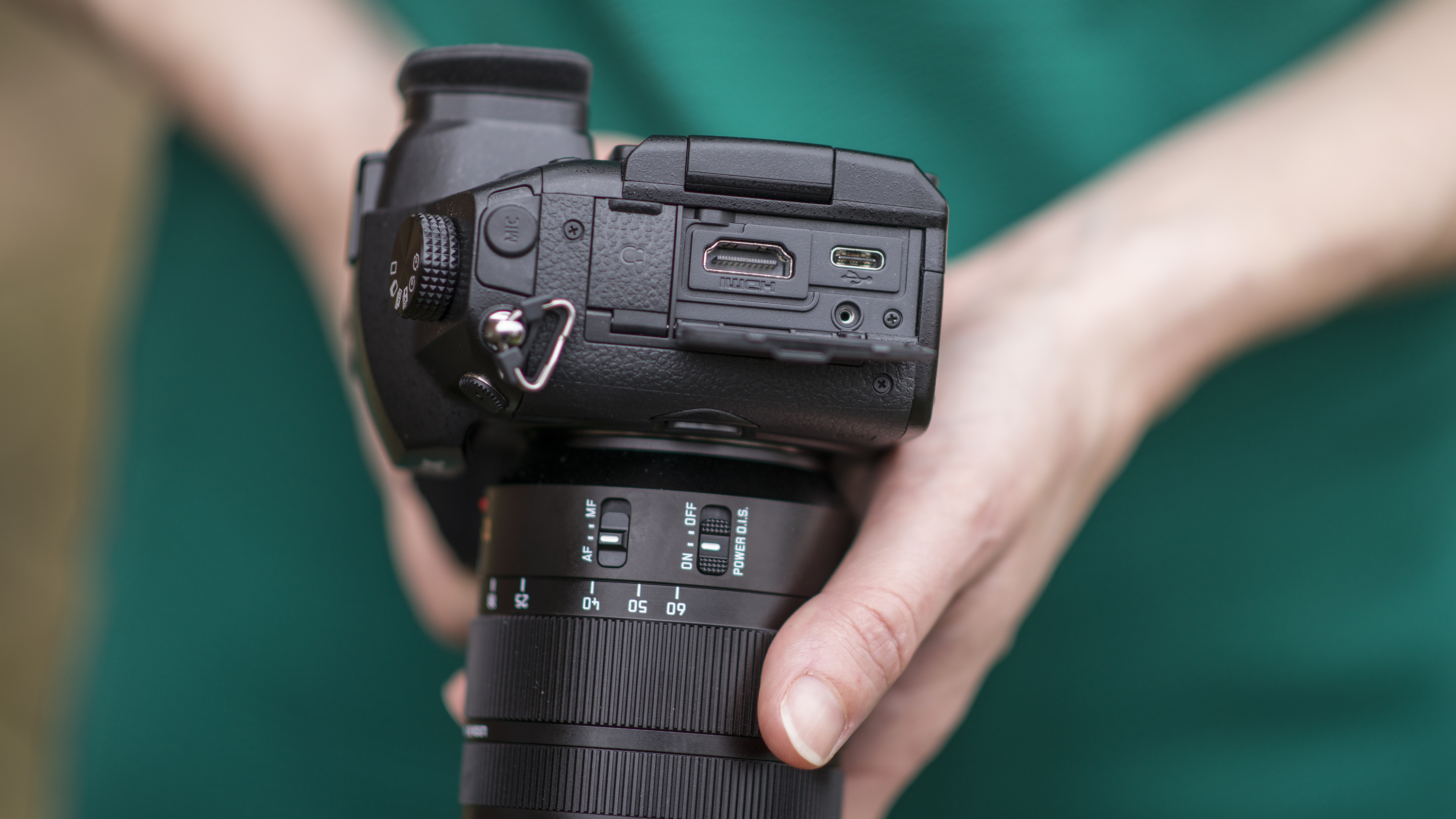
The GH5 is also fully weather-sealed, and freeze-proof down to -10 degrees Celsius, while the heat-dispersing design means you're unlimited in your video recording time – you'll only be restricted by the capacity of your storage media. Speaking of which, the GH5 features dual SD card slots with UHS-II support, while it also gains a full-sized HDMI Type A terminal.
Panasonic has also overhauled the shutter. It's rated to 200,000 cycles just as on the GH4, but there's a new spring drive, with a floating construction for the shutter frame. What does this mean? It should see a reduction in the shock to the camera body by one-sixth when the shutter is fired.
The inclusion of an intuitive touchscreen hasn’t stopped Panasonic littering the Lumix GH5 with a wealth of buttons and controls to enable you to quickly toggle key features. There’s no LCD display on the top plate, but either side of the pentaprism are chunky drive and mode dials, while just behind the front command dial are buttons to access White Balance, ISO and exposure compensation.
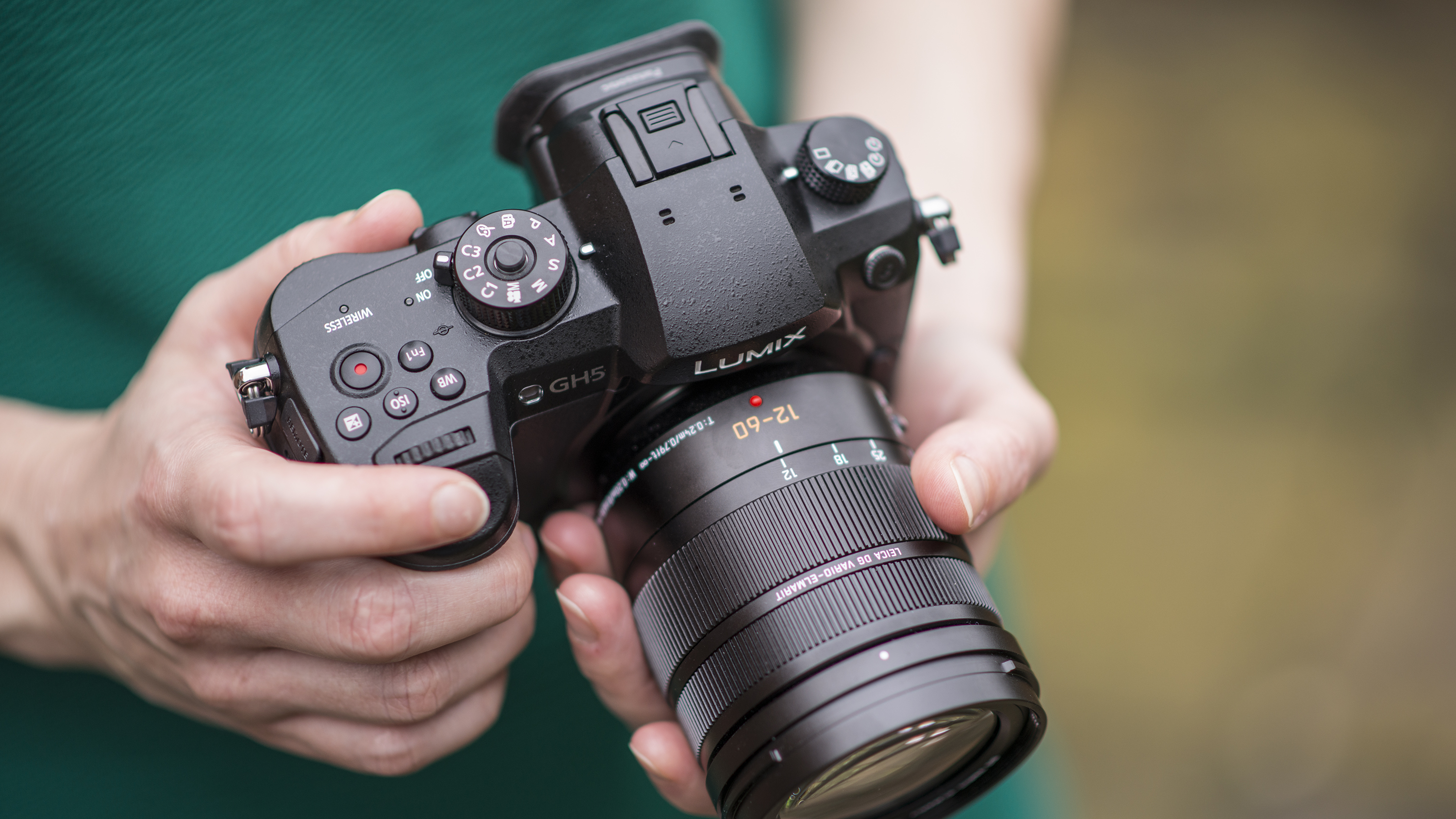
The nice touch here is that all three buttons are finished slightly differently – the White Balance button is convex-shaped, the ISO one is flat with two little dimples on it, and the exposure compensation button is concave. This means that when you have the camera raised to your eye you should know which of the three controls you’re accessing just by feel.
Sitting behind these are a programmable function button and a dedicated movie record button, which has worked its way up from the rear of the GH4 to the top here.
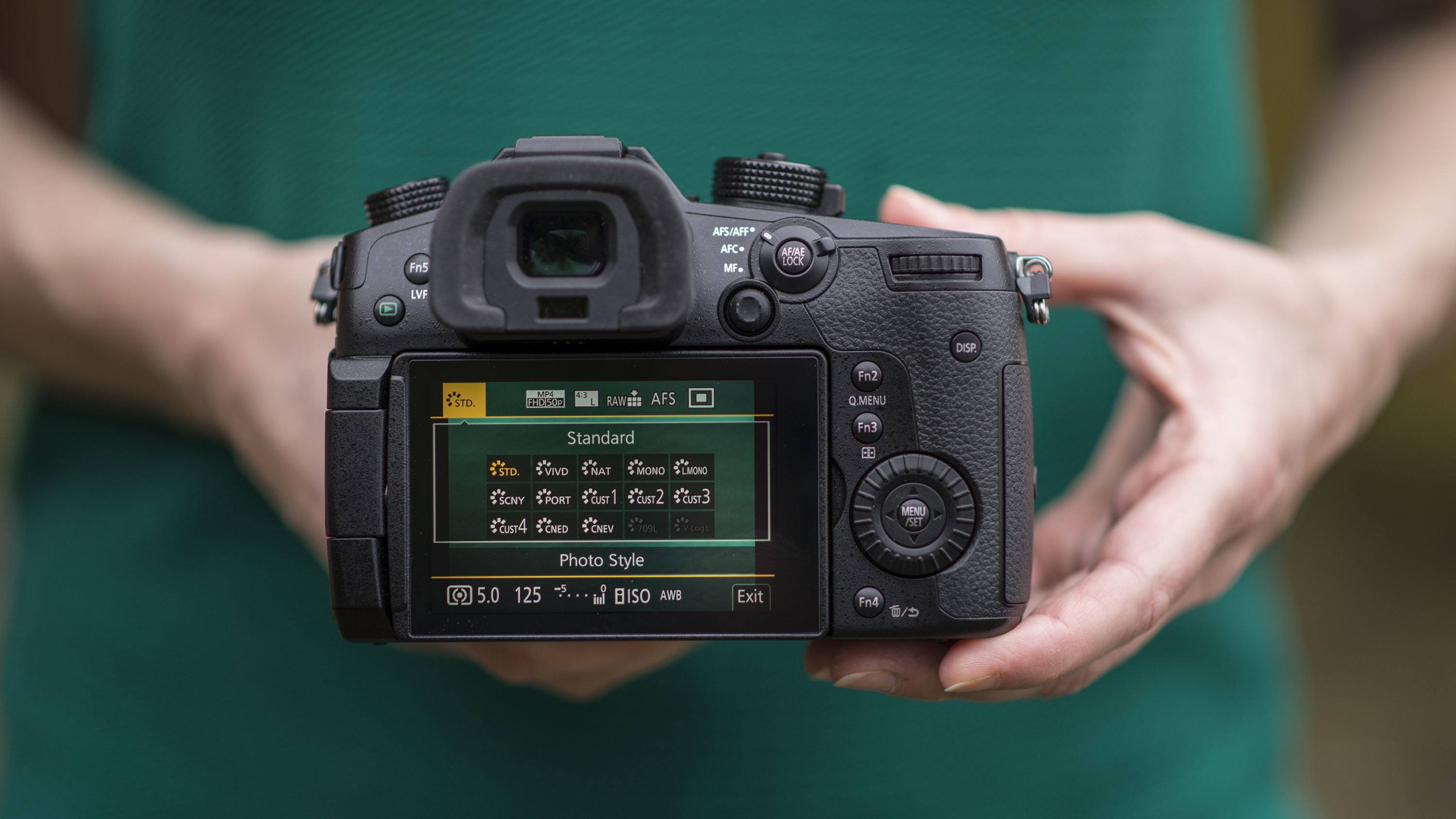
Where the movie record button used to sit on the GH4, there's now a small multi-directional joypad on the Panasonic GH5 – this is used primarily to select your AF area (if you're not using the touchscreen), but it can also be used to navigate the GH5's menus.
The menu system has been tweaked too. The number of items on each page has increased from five lines to eight, so you can see more information with less scrolling, while Panasonic has re-designed the order and position of each menu item; this could cause GH4 users who are upgrading some initial frustrations when they start shooting, but the menu is a lot clearer, while frequently used items can be stored in the GH5's 'my menu'.
Autofocus
- 225-area AF system
- Customized AF settings
- Motion tracking built into the system
As you'd expect, the Panasonic Lumix GH5's AF system has seen quite a jump from the one in the three-year-old camera it replaces, to a 225-area system that covers the vast majority on the frame.
As well as Multi AF, there's also a Custom Multi mode that enables you to freely select the AF-area group, or Zone AF, where the focus area group size and position can be customized.
Users can also set up four different profiles with adjustable sensitivity, AF area switching sensitivity and moving object prediction, depending on the type of subject they're intending to shoot – interestingly the GH5 now has motion-tracking built into the system.
Focusing speed has also been improved compared to the GH4's 0.07 sec – the Lumix GH5 focuses at 0.05 secs, with the Venus Engine now processing information at 480fps.
In use, AF performance is very brisk – paired with the new 12-60mm f/2.8-4 Leica lens the GH5 quickly and silently locked onto subjects under a range of lighting conditions (the GH5 can focus down to minus -4EV) without hesitation.
With the GH5's uprated DFD (Depth from Defocus) autofocus technology on board as well we found the camera's tracking performance to be very good, happily following fairly fast-moving subjects in our tests.
Performance
- 12fps burst shooting (9fps with AF-C)
- 1,728-zone metering system
- 410-shot battery life
The Panasonic Lumix GH5 uses the company's tried and test 1,728-zone metering system to work out exposure, and it does a very solid job. In fact, there were very few occasions when we had to toggle with the exposure compensation to get the results we were after.

It's a similar story with the Lumix GH5's auto white balance, with the camera returning natural-looking results – if you're looking for a bit more warmth when conditions are a little overcast you might want to opt for one of the dedicated presets to give things a bit of a boost.
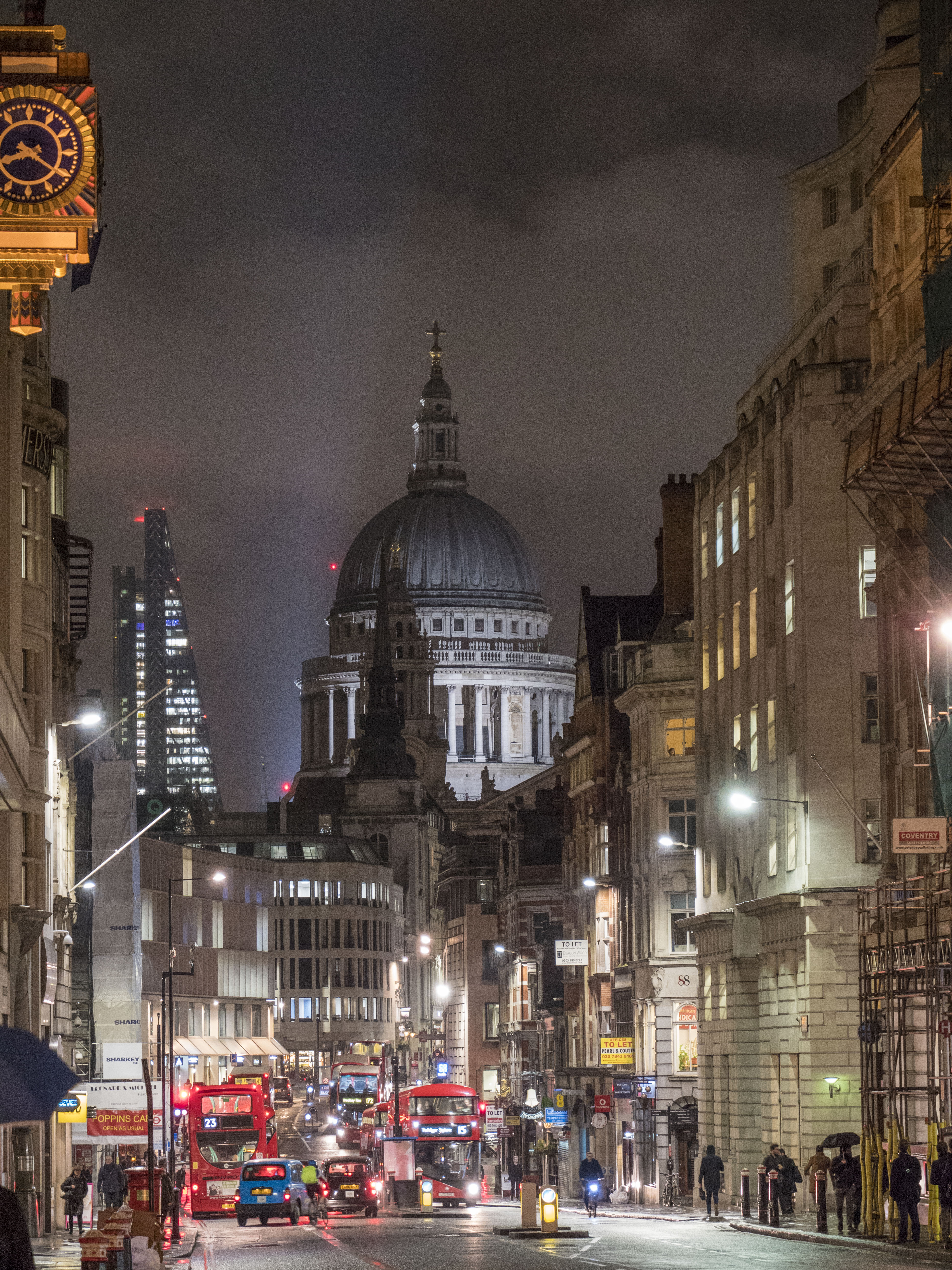
The GH5's clever hybrid image stabilization system works a treat – even when the shutter speed was at a slow 1/10 sec (and in some cases even slower) it was still possible to get sharp handheld shots with a focal length equivalent to 120mm.
The IS system also plays a part in how satisfying the view through the viewfinder is. Not only is it incredibly large and bright, with a resolution that allows you to assess focus easily, the IS helps to stabilize your view without the uncomfortable yaw that can be an issue on some systems.
Battery life is rated at 410 shots, so it's worth thinking about packing some extra batteries if you're planning on shooting for long periods. There's also a BGGH5 battery grip available for the GH5, although while this gives you extra stamina it doesn't deliver any of the performance advantages, such as an improvement in burst rate, that some grips offer.
Image quality
- ISO100-25,600
- No optical low pass filter
- Good dynamic range
From a stills perspective at least, the smaller proportions of the Micro Four Thirds sensor used by the Panasonic GH5 have been seen as a bit of an achilles heel when cameras that use it are pitted against cameras using larger APS-C and full-frame sensors at a similar price point.
Panasonic (and, for that matter, Olympus) has made huge strides in sensor design, and the GH5's 20.3MP chip is the company's best yet.
The absence of an optical low pass filter sees the GH5 deliver excellent detail at lower sensitivities; it's a match for APS-C rivals boasting a similar amount of pixels.
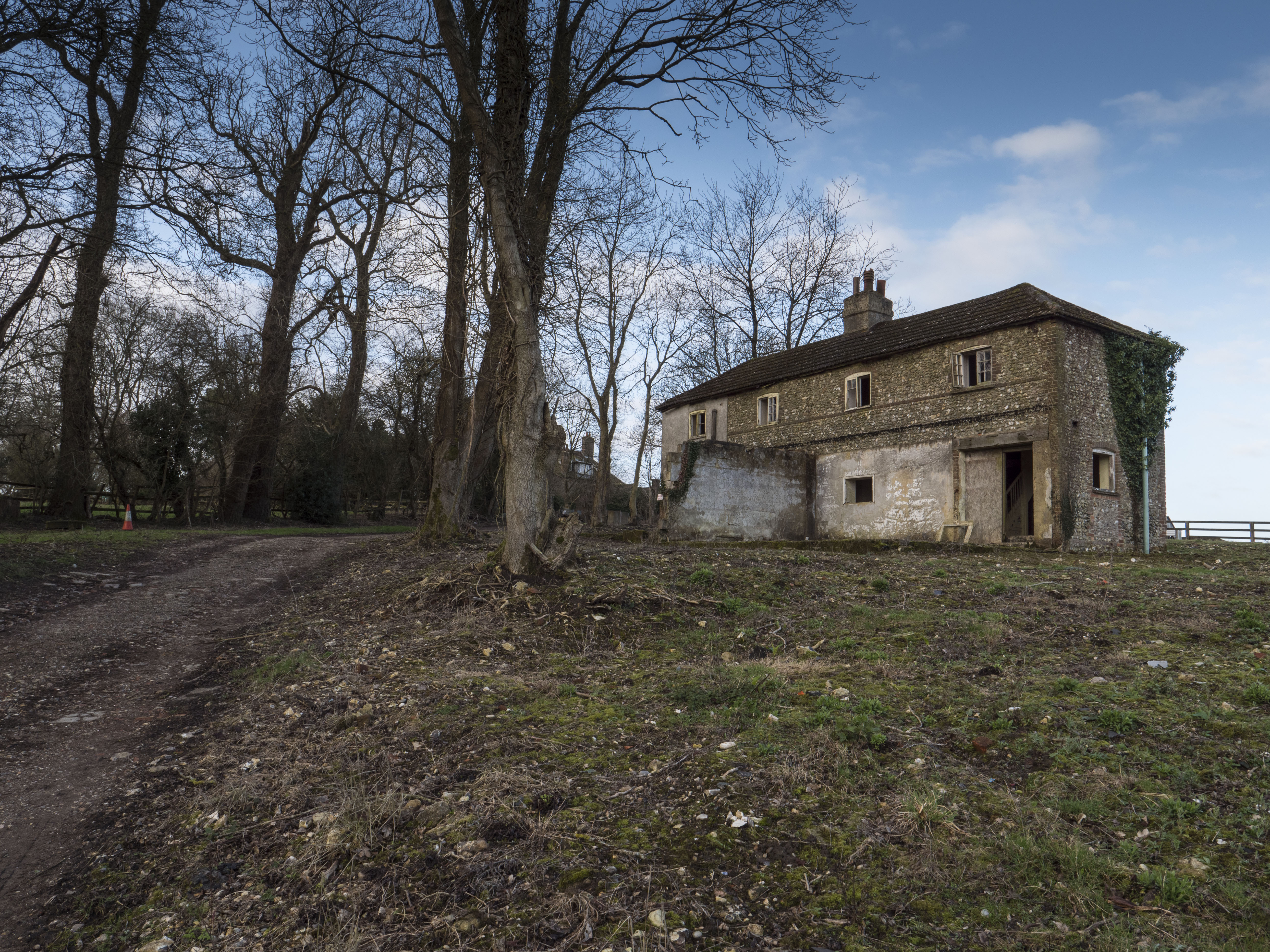
When images from the Lumix G5 are viewed in isolation, results through the ISO range look good, although we can see a hint of luminance (grain-like) noise at lower sensitivities. This is primarily in blocks of color, and while it's only really noticeable under close inspection, it is there.
As you ramp up the GH5's ISO luminance noise becomes more pronounced, with chroma (color) noise also becoming apparent. Results at ISO3200 and 6400 are more than fine – while they have noticeable noise of both varieties, you should be able to suppress this with a bit of tinkering in Lightroom.
That said, compared to those from larger-sensor rivals such as Fuji's X-T2 or Nikon's D500, images from the GH5 come up a little short, with results not appearing quite as clean.
Dynamic range is very good, and it's possible to recover a good amount of detail even in JPEG files. For best results though, raw files deliver the widest latitude, enabling you to pull back useful amounts of detail in the shadows and highlights.
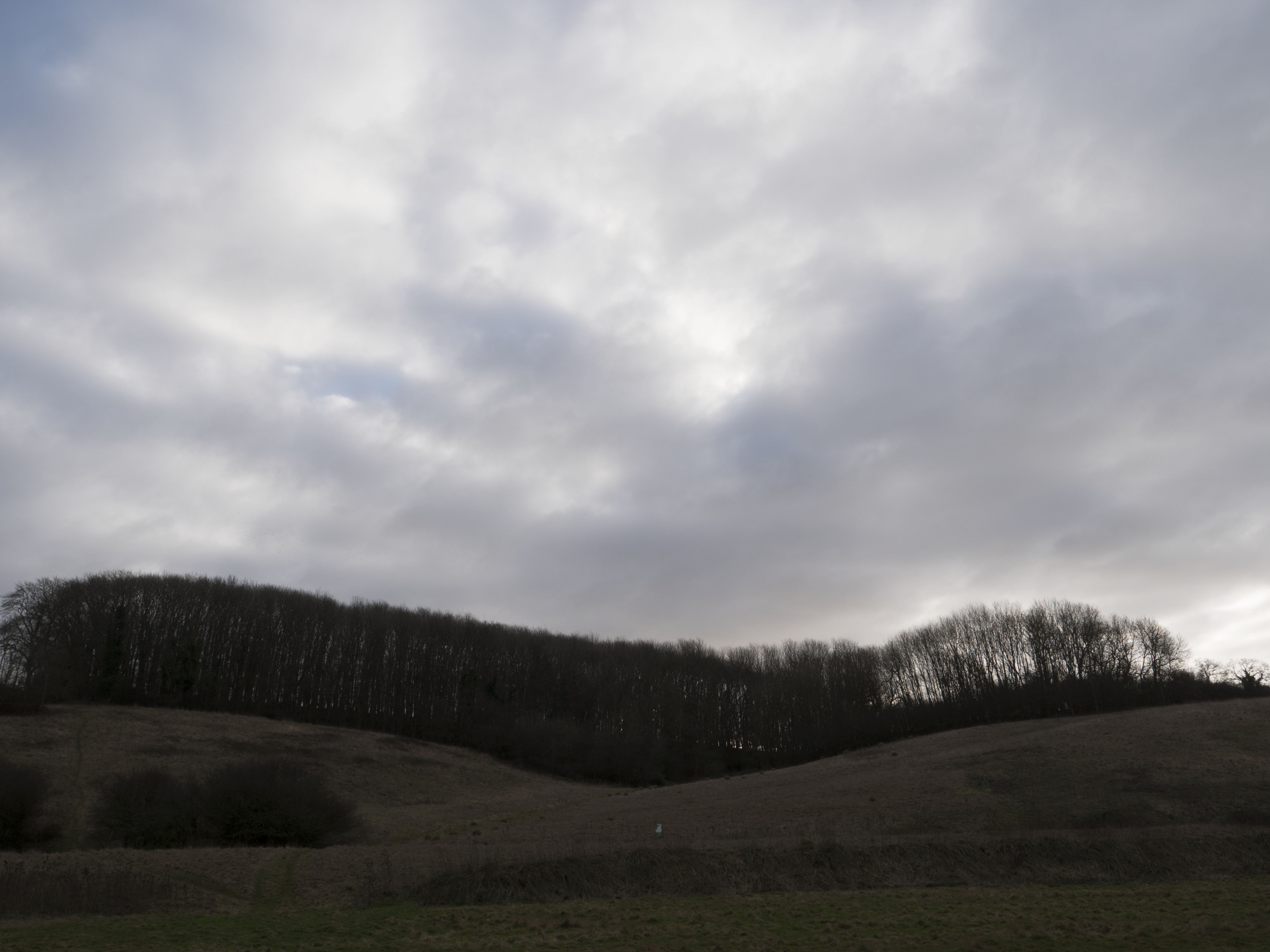
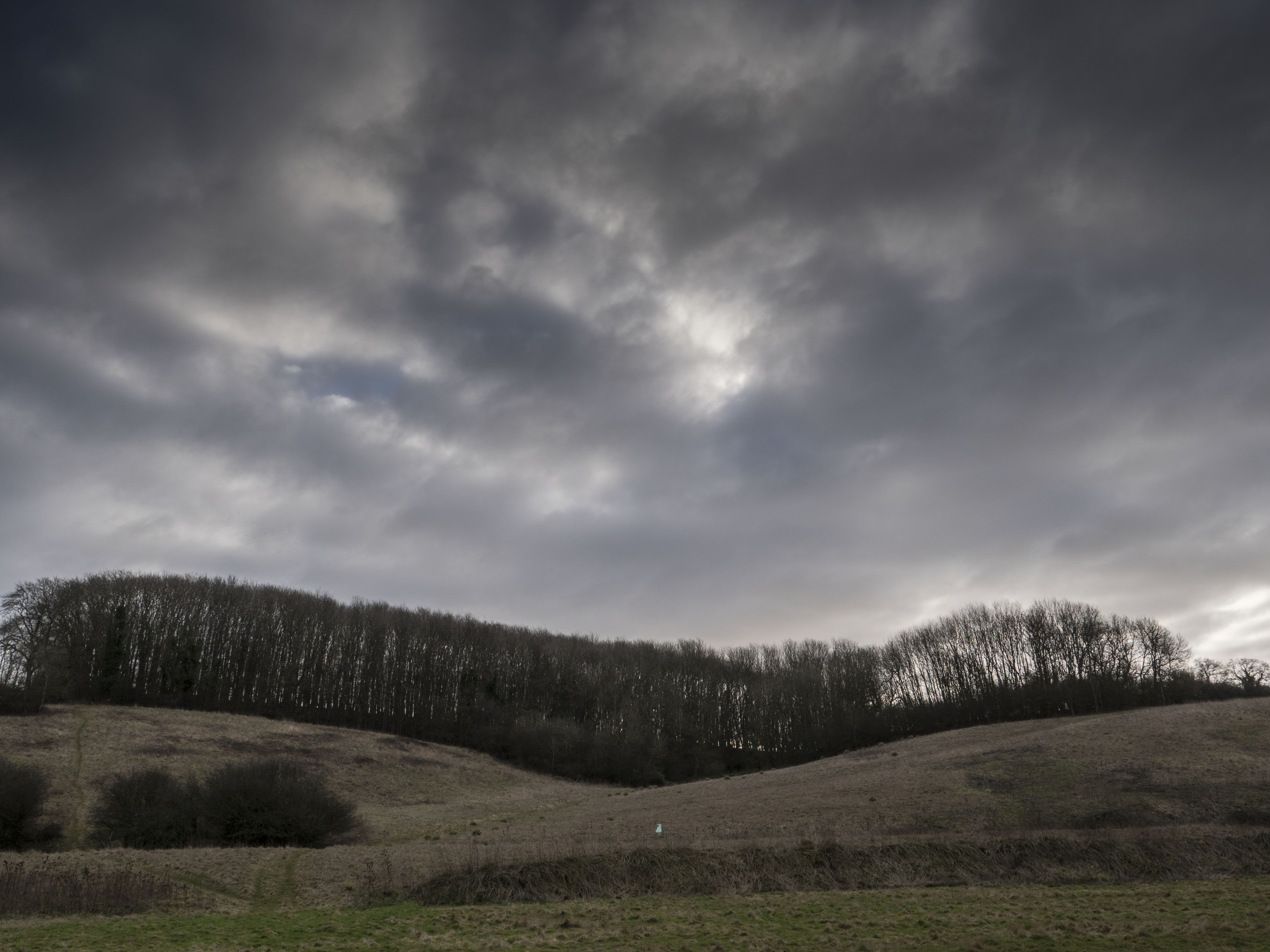
Verdict
While the last couple of GH-series cameras have felt a little like video cameras masquerading as stills camera, the Panasonic Lumix GH5 is a much more rounded piece of kit.
The video specification and capabilities offered are still impressive – this is certainly one of, if not the best 4K camera solutions out there, before you start considering dedicated professional video cameras.
The Lumix GH5 also has size on its side. While the camera itself is proportionally similar to that of a serious DSLR, the Micro Four Thirds mount means that overall it's a much more compact package than APS-C or full-frame rivals thanks to the smaller optics.
As we've mentioned though, the pay-off of this smaller sensor is that the GH5's image quality can't quite match its larger-sensor rivals. They're not poles apart, but if your main concern is ultimate image quality then that's something to bear in mind.
But that's just part of the story, as the GH5 has a lot to offer the stills photographer as well.
Build and handling are both great, with plenty of easily reached body-mounted controls, a refined touchscreen interface and bright and large EVF. Then there's the 5-axis IS and super-quick AF system, as well as the rapid shooting speed, making the GH5 a camera that will keep up with even the most demanding of shooting situations.
In a nutshell, then, the Panasonic Lumix GH5 is a great choice for those looking for a sophisticated all-in-one solution that's just at home shooting great stills as well as breathtaking video.
Competition
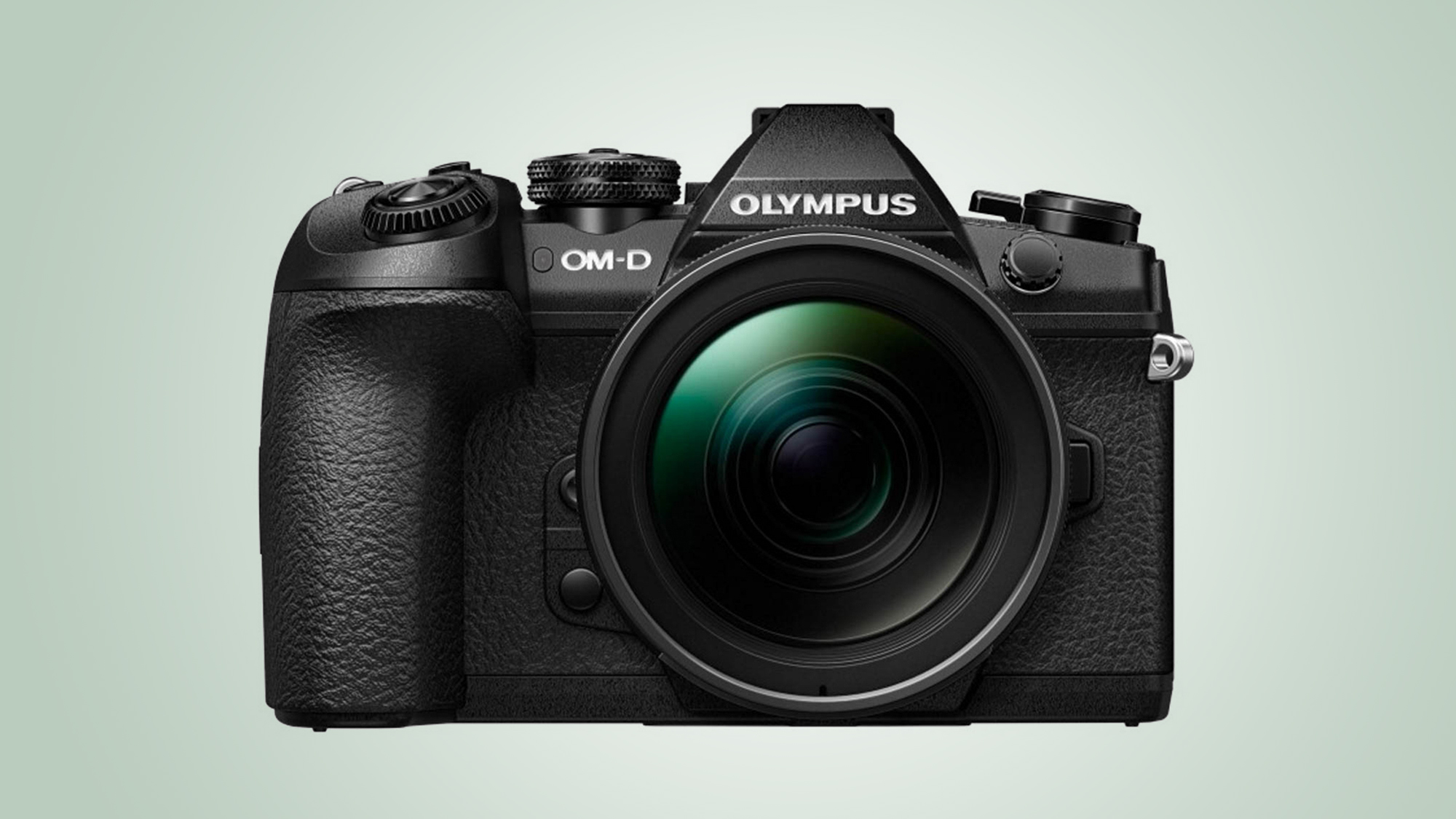
Olympus OM-D E-M1 II
Sharing the same Micro Four Thirds lens mount as the Lumix GH5, the Olympus OM-D E-M1 II is perhaps its closest competitor. Image quality is difficult to split between the two cameras, but the E-M1 II doesn't have quite the same breadth of video features. It's more compact though, and offers slightly faster burst shooting (with a traditional mechanical shutter at least).
Read the full review: Olympus OM-D E-M1 II
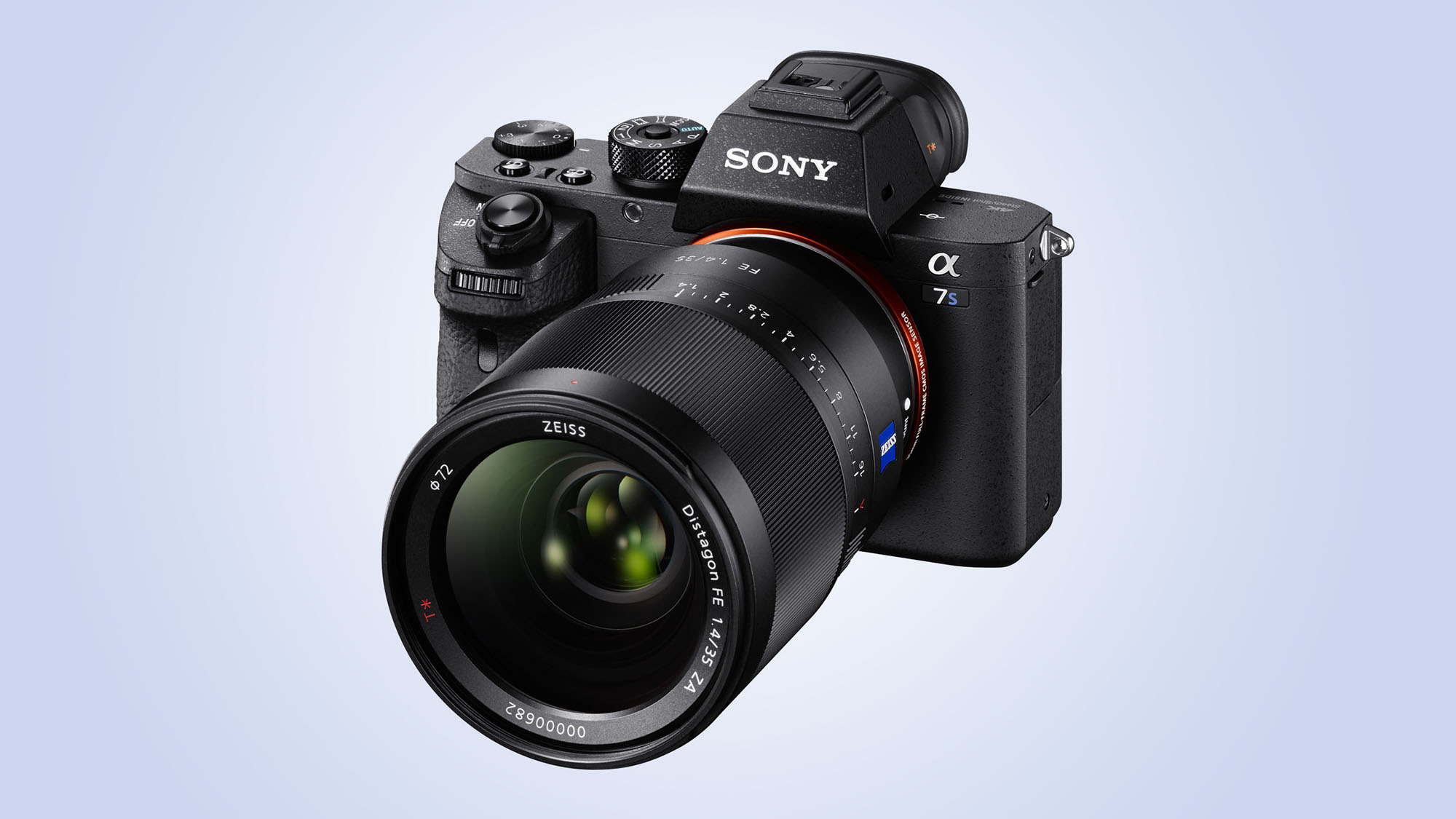
Sony Alpha A7S II
One of the A7S II's major selling points at launch – internal recording of 4K footage – has since been matched by many others, but it’s the modest pixel count of its full-frame sensor that separates it from its rivals. We found its dynamic range to be very high, and consistently better than rivals at higher sensitivities, while noise was also shown to be less on an issue than with cameras with more populated chips.
Read the full review: Sony Alpha A7S II
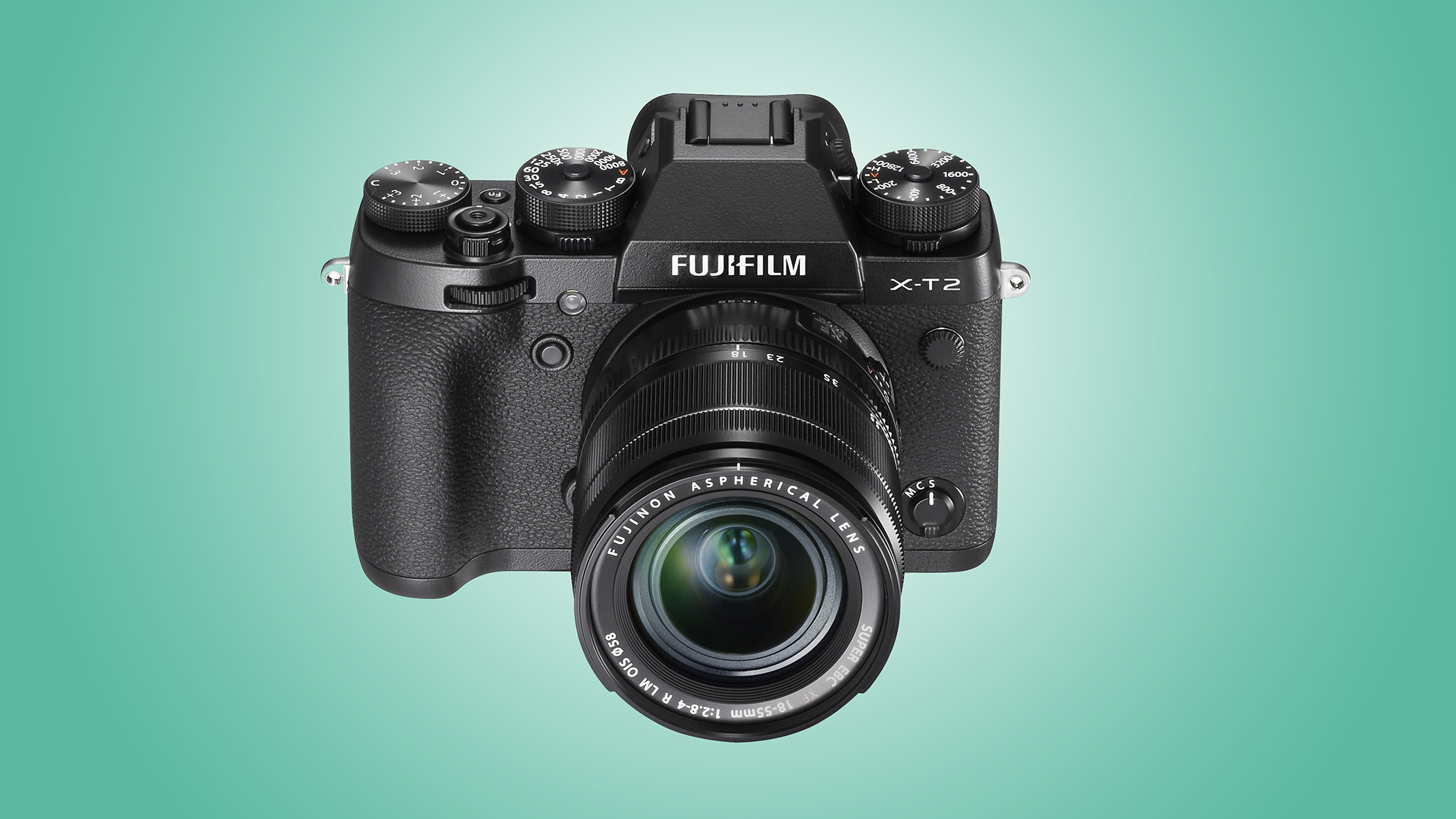
Fuji X-T2
While the X-T2 is capable of shooting 4K video, it's definitely more of a stills camera. Handling is superb, while the images from the 24MP deliver lovely colors and detail. The autofocus system has also seen a big overhaul from its predecessor, making the X-T2 one of our favourite cameras at the moment.
Read the full review: Fuji X-T2